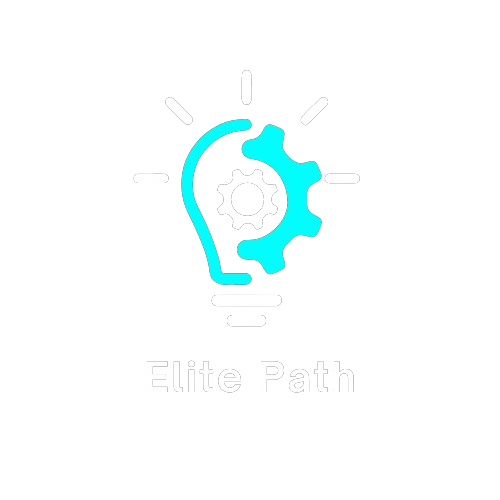What Is a Remote Inbound Closer and Why Demand Is Rising Fast
The role of a remote inbound closer has quickly become one of the most sought-after positions in the online business world. Unlike traditional salespeople who rely on cold calling or outbound efforts, inbound closers handle leads that are already interested in a product or service. These prospects usually schedule calls, submit contact forms, or request more information—meaning they’re already warm and open to buying. That’s where the inbound closer comes in: to listen, understand needs, and guide the buyer to a confident yes. With the rise of high-ticket online programs, coaching services, and digital offers, businesses are investing heavily in closers who can convert leads into revenue without face-to-face interaction. The ability to perform this job from anywhere—your home office, a beach café, or a co-working space—makes it even more attractive. As remote work continues to grow, this role offers unmatched flexibility, income potential, and freedom.
The Skills Every Remote Inbound Closer Must Master
To thrive as a remote inbound closer, technical know-how isn’t enough—you need a refined set of interpersonal skills. One of the most important is active listening. Instead of jumping into pitch mode, great closers ask questions, listen closely, and understand the prospect’s pain points and goals. Emotional intelligence plays a massive role here, helping you read between the lines and build real rapport. You also need to master objection handling with calm confidence, transforming hesitation into clarity. Persuasive communication is key, but it must feel organic and personal, not scripted or robotic. The ability to connect authentically over Zoom or phone is essential, especially when body language cues are limited. Finally, a successful remote inbound closer uses proven sales frameworks—like the NEPQ method or consultative selling—to guide conversations without pressure. Each of these skills improves with practice and feedback, turning average sales reps into high-converting closers.
Day in the Life of a Remote Inbound Closer
A typical day for a remote inbound closer is structured, yet flexible. Most closers start by checking their calendar for booked sales calls, which are often generated by paid advertising or content funnels. Before each call, reviewing the prospect’s application or background helps tailor the conversation. Calls are usually conducted via Zoom, Google Meet, or phone, and last between 30 to 60 minutes. After the call, a closer may update a CRM with notes, send follow-up emails, or coordinate with the sales or fulfillment team. Besides calls, time is spent on skill development—watching sales trainings, roleplaying with peers, or listening to recorded calls for refinement. Tools like Slack, Calendly, Close, and Zoom become your daily work companions. While the role allows for location independence, discipline and time management are essential to stay productive. Many closers enjoy setting their own schedules and balancing work with personal time more freely than traditional jobs allow.
Why Remote Inbound Closing Is a High-Income Opportunity
Remote inbound closers often earn well above industry averages, especially when working with high-ticket products or services. Because compensation is usually commission-based, your income directly reflects your ability to close deals. For example, closing a $5,000 coaching program at a 10% commission nets you $500 per sale. Multiply that by a few sales per week, and the numbers add up quickly. Businesses offering high-ticket items understand the value of skilled closers who can consistently convert warm leads into paying clients, and they’re willing to pay accordingly. What’s more, many closing opportunities offer performance-based bonuses, recurring commissions, or backend upsell earnings. Unlike salaried sales roles, the remote inbound closer model rewards initiative, strategy, and results. For ambitious professionals, this career path offers a scalable way to earn six figures while working from anywhere. With strong demand in online education, health, personal development, and business services, the market is full of potential.
How to Get Started as a Remote Inbound Closer
Breaking into the remote inbound closing field doesn’t require a degree or decades of experience—but it does require focused action. Start by learning proven sales frameworks through specialized online training programs. Some platforms offer certifications, roleplay communities, and access to job boards with real companies looking for closers. Next, work on your communication skills by practicing mock calls and recording yourself to refine tonality and flow. Building your personal brand on LinkedIn and joining Facebook groups for closers can also help you find leads and network with business owners. Many companies prefer closers who can demonstrate results, so offering to work on commission-only deals at first can build your portfolio. Once you have a few client wins, referrals and bigger opportunities start to flow. A remote inbound closer with initiative, strategy, and dedication can rise quickly and land long-term clients with consistent deal flow.
Common Pitfalls New Remote Inbound Closers Should Avoid
Many new closers make the mistake of relying too heavily on scripts without adapting to the person in front of them. This makes calls feel robotic and disconnects the prospect emotionally. Another common trap is trying to rush through calls instead of truly understanding the prospect’s pain points and offering a relevant solution. Failing to handle objections with empathy is another red flag that can kill deals quickly. Some closers also over-promise on what a product or service can deliver, which not only backfires on customer satisfaction but risks your long-term reputation. Working remotely brings freedom, but without time management and self-discipline, productivity and earnings can suffer. Avoid working with low-quality leads or offers you don’t believe in, as this makes closing harder and drains motivation. Lastly, don’t stop learning—whether through feedback, call reviews, or mentorship, growth is the key to becoming a top-performing remote inbound closer.
Where to Find Remote Inbound Closer Jobs and Clients
Landing your first gig as a remote inbound closer is easier when you know where to look. Start by checking job boards like RemoteCloser.io, We Work Remotely, and FlexJobs that list inbound sales roles. LinkedIn is a goldmine for connecting with online business owners, coaches, and marketing agencies that frequently hire closers. Facebook groups like Remote Closing Academy, Sales Revolution, and High Ticket Closers also offer leads and networking opportunities. Another strategy is pitching directly to service providers running ads—chances are, they’re generating inbound leads and may need help closing them. Crafting a compelling pitch that highlights your communication skills and ability to convert warm leads can set you apart. Once you’ve landed a few roles, maintaining consistent performance and communication builds long-term relationships with clients. As you grow, you can scale by taking on multiple clients or even building a remote sales agency that trains and places other closers.
How Remote Inbound Closers Can Keep Growing and Scaling Their Careers
The remote inbound closer role is not just a job—it’s a gateway to greater opportunities. As you gain experience and improve your closing rates, you can position yourself for high-ticket partnerships, equity deals, or even become a sales trainer or coach. Some closers evolve into sales managers, overseeing remote teams and optimizing sales processes. Others develop personal brands and launch digital products or training programs based on their expertise. Staying sharp means continually improving your communication, mindset, and objection handling strategies. Joining mastermind groups, attending virtual events, and staying on top of market trends keeps you competitive and inspired. Exploring different niches—like SaaS, online education, or digital marketing—also allows you to find the best-fit industries for your personality and goals. With the freedom to work from anywhere and the ability to scale your income, remote inbound closing can evolve into a fulfilling and lucrative long-term career.
FAQ: Remote Inbound Closer Career Essentials
Q1: What types of products or services do remote inbound closers usually sell?
Most remote inbound closers work with high-ticket services like coaching, consulting, marketing agencies, or software subscriptions. These offers often range from $2,000 to $20,000 or more.
Q2: Do I need a background in sales to become a remote inbound closer?
No formal background is required, but strong communication skills, a willingness to learn, and commitment to mastering proven sales frameworks are essential for success.
Q3: Can I do this part-time while working another job?
Yes, many closers start part-time. However, full-time closers often earn more due to consistent availability and faster skill development.
Q4: How much can a beginner remote inbound closer realistically earn?
Beginners can expect to earn anywhere from $2,000 to $5,000 monthly, depending on the offer, lead quality, and closing rate. With experience, earnings can grow significantly.
Q5: What are the biggest challenges of being a remote inbound closer?
Common challenges include managing your own schedule, staying motivated in a remote environment, and handling rejection or objections without losing confidence.











